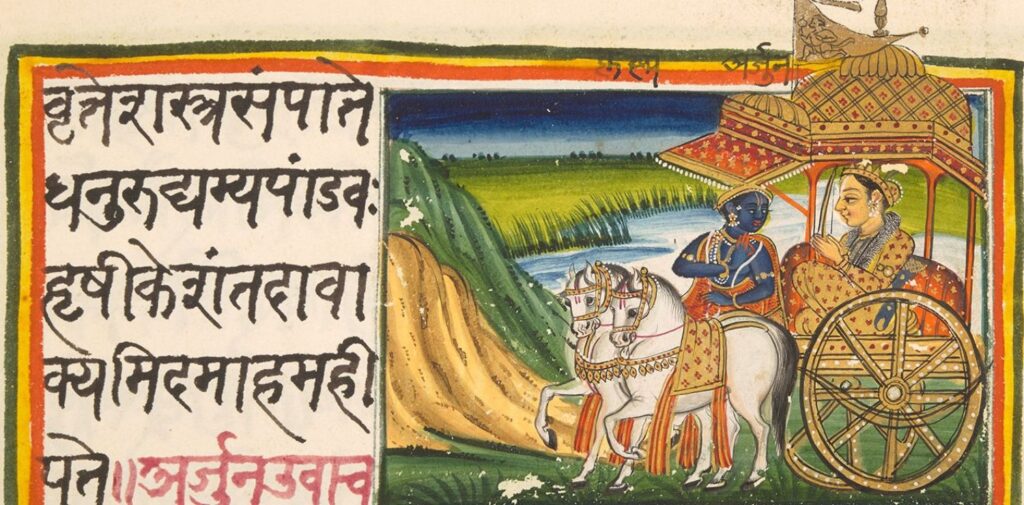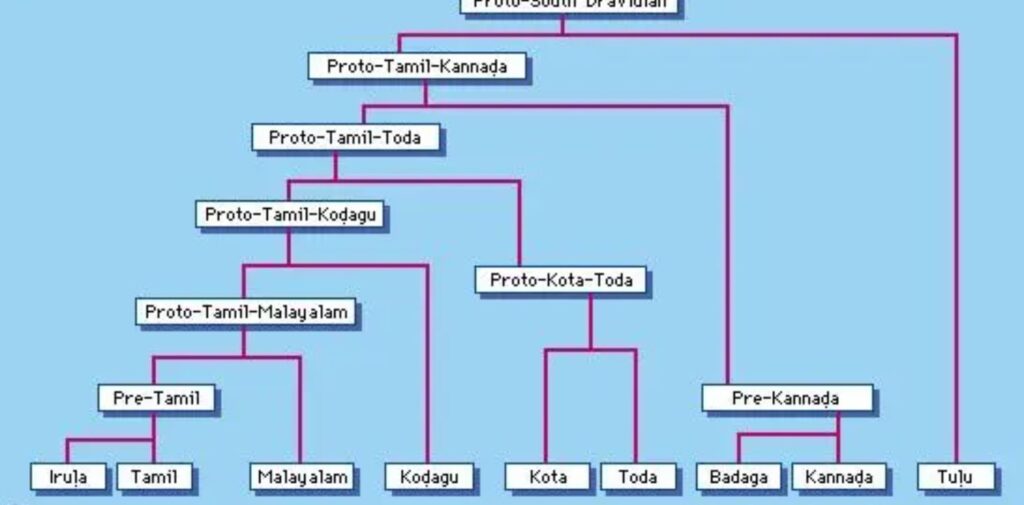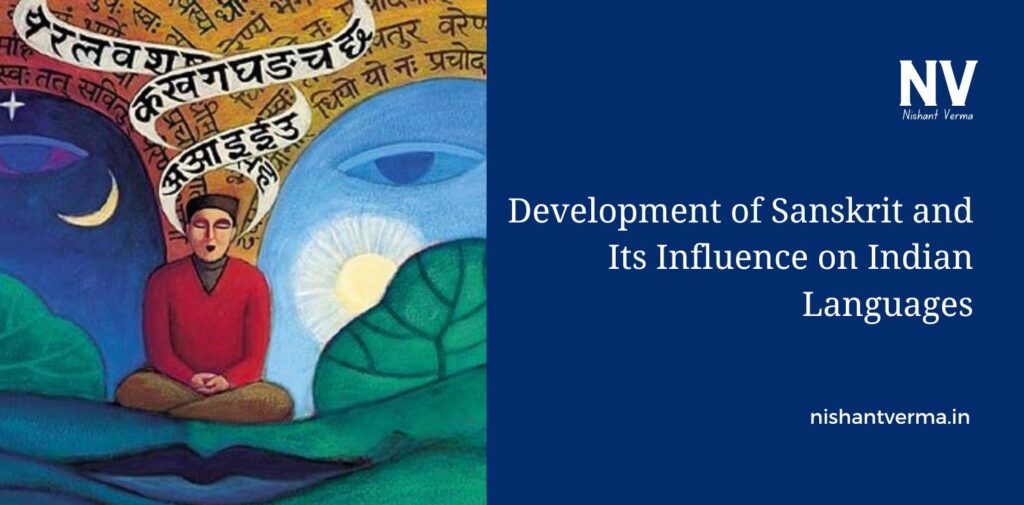Sanskrit is one of the oldest and most important Indian Languages in the history of India. It has been a key part of India’s culture, literature, and religious traditions for thousands of years. In this article, we will explore how Sanskrit developed and how it influenced the languages spoken in India today. We will look at its history, its importance, and how it continues to impact many languages in India.
What is Sanskrit?
Sanskrit is an ancient language that was first spoken in India over 3,500 years ago. It is the language of the oldest Hindu scriptures, the Vedas, and has been used for writing many important texts in Indian philosophy, religion, and science. Sanskrit is a classical language, which means it was used by scholars and priests to write great works of literature, poetry, and religious teachings.

The Birth of Sanskrit
Sanskrit was born in the early stages of Indian civilization, during the Vedic period (around 1500 BCE to 500 BCE). The earliest form of Sanskrit was called “Vedic Sanskrit,” and it was used in the religious hymns of the Vedas. These texts were passed down orally from generation to generation. Over time, the language evolved into “Classical Sanskrit,” which is the form we recognize today in many ancient Indian texts.
During this time, Sanskrit became the language of the scholars and priests. It was considered a sacred language, and only a few people had the ability to learn and use it. Sanskrit was also used for writing important works in science, mathematics, astronomy, medicine, and literature.
The Influence of Sanskrit on Indian Languages
India is a land of many languages and cultures. There are hundreds of languages spoken across the country, but a large number of them are influenced by Sanskrit. In fact, many of the languages spoken in India today can trace their roots back to Sanskrit. This is because Sanskrit has influenced the development of several Indian language families.
The two main groups of languages that have been influenced by Sanskrit are the Indo-Aryan languages and the Dravidian languages.
Indo-Aryan Languages
The Indo-Aryan languages are a group of languages spoken in northern, western, and central India. These languages are direct descendants of Sanskrit, and they have many similarities with it. Some of the most widely spoken Indo-Aryan languages include:
- Hindi: The most spoken language in India today. It is the official language of India.
- Bengali: Spoken in West Bengal and Bangladesh.
- Punjabi: Spoken in Punjab.
- Marathi: Spoken in Maharashtra.
- Gujarati: Spoken in Gujarat.
- Odia: Spoken in Odisha.
These languages share a lot of vocabulary, grammar, and syntax with Sanskrit. For example, many words in Hindi and other Indo-Aryan languages come directly from Sanskrit. Words like “पुस्तक” (pustak) for book, “विचार” (vichar) for thought, and “ज्ञान” (gyan) for knowledge are all Sanskrit words used in Hindi and other languages.

Dravidian Languages
The Dravidian languages are spoken mainly in the southern part of India, in states like Tamil Nadu, Karnataka, Andhra Pradesh, and Kerala. Some of the major Dravidian languages include:
- Tamil
- Telugu
- Kannada
- Malayalam
While the Dravidian languages are not direct descendants of Sanskrit, they have been heavily influenced by Sanskrit, especially in their vocabulary. For example, many Sanskrit words related to religion, administration, and culture have found their way into Tamil, Telugu, Kannada, and Malayalam.
Sanskrit’s Role in Indian Culture and Religion
Sanskrit has always played a central role in the religious and cultural life of India. The language of the Vedas, the Upanishads, and the epics like the Mahabharata and Ramayana, Sanskrit is considered the language of the gods. Many Hindu rituals, prayers, and chants are performed in Sanskrit.
In addition to Hinduism, Sanskrit has been important in the development of other Indian religions such as Buddhism and Jainism. Both religions used Sanskrit to write their sacred texts. For example, the Buddhist scriptures known as the Tripitaka were written in Sanskrit, and Jain texts like the Agamas were also written in this language.
The Decline of Sanskrit and the Rise of Vernacular Languages
While Sanskrit played a crucial role in the development of Indian culture, its use began to decline over time. During the medieval period, many local languages started to gain importance. The rise of regional kingdoms, the spread of Islam, and the influence of foreign languages such as Persian and Arabic led to changes in language use across India.
As a result, many languages in India began to evolve into their own distinct forms, separate from Sanskrit. However, even as Sanskrit declined in everyday use, it continued to influence the development of these regional languages. The literary works written in Sanskrit continued to be respected and studied, and many scholars and poets continued to write in Sanskrit for centuries.
Sanskrit in Modern Times
In modern India, Sanskrit is not commonly spoken, but it still plays an important role in education and culture. Sanskrit is taught in schools and universities, especially for students interested in ancient Indian history, philosophy, and religion. Many scholars still study Sanskrit to understand ancient texts and the rich heritage of Indian culture.
Sanskrit also has a special place in the Indian Constitution. Though it is not the most widely spoken language, Sanskrit is recognized as one of the 22 official languages of India. It is also taught as a subject in many Indian schools, especially in the states of Uttar Pradesh, Madhya Pradesh, and Rajasthan.

How Sanskrit Influenced Modern Indian Languages
The influence of Sanskrit is still very much visible in the languages of India today. Most Indian languages, including Hindi, Bengali, Tamil, Kannada, and Gujarati, continue to use Sanskrit words, especially in formal writing, literature, and religious texts.
- Vocabulary: Many words in modern Indian languages are borrowed directly from Sanskrit. For example, words like “दर्शन” (darshan) for philosophy, “विज्ञान” (vijnan) for science, and “स्वास्थ्य” (swasthya) for health are used in several Indian languages.
- Grammar: The structure of many Indian languages, especially the Indo-Aryan languages, is based on the grammatical rules of Sanskrit. For example, the use of cases (such as nominative, accusative, genitive) in Hindi and other languages is similar to how Sanskrit uses these grammatical rules.
- Literature and Poetry: Sanskrit has greatly influenced the writing style and themes in modern Indian literature. Many famous Indian poets, such as Rabindranath Tagore and Kalidasa, were inspired by Sanskrit literature. Even today, many literary works in languages like Hindi and Bengali are influenced by Sanskrit’s poetic forms.
Conclusion
Sanskrit, with its rich history and cultural importance, has left an indelible mark on India and its languages. Though not widely spoken today, Sanskrit continues to influence the languages of India, shaping the way people speak, write, and think. Its legacy is visible in the literature, poetry, religious practices, and even modern education of India. By studying Sanskrit and understanding its impact, we can gain a deeper appreciation of India’s ancient civilization and the languages that have evolved from it.




